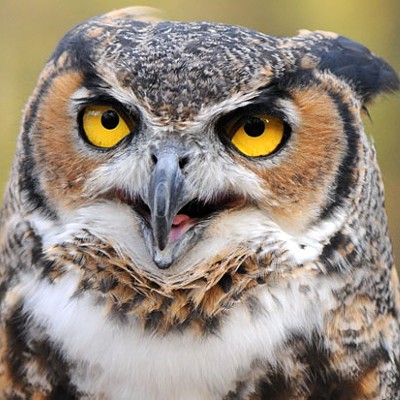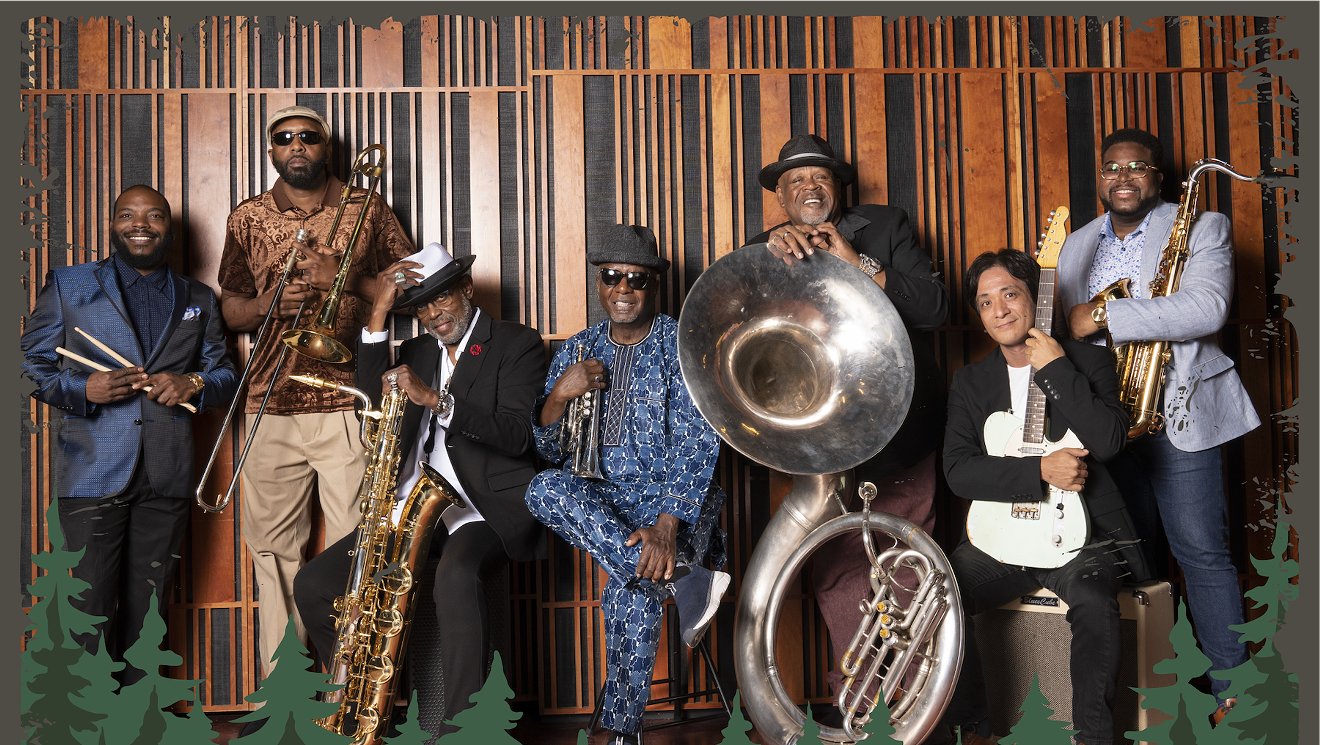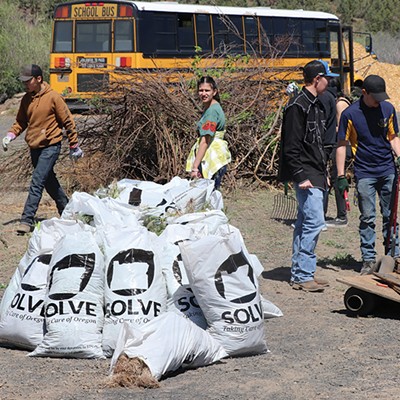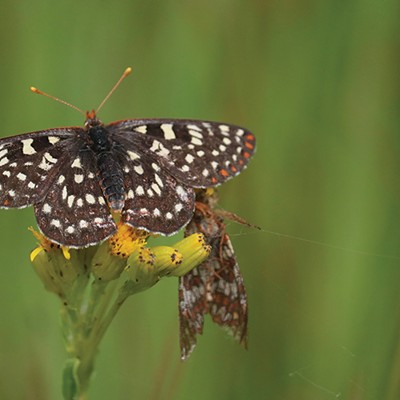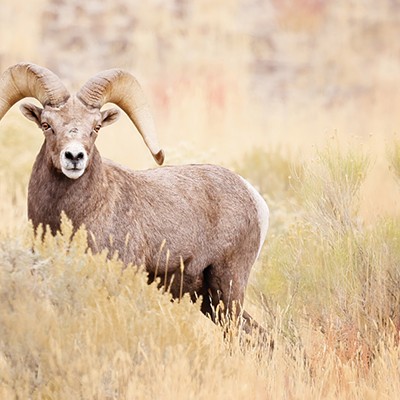The other day, my daughter Kristin — born in Bend way back in the '50s, and who went with me regularly to Fort Rock in North Lake County — sent me a text that I had the good fortune of reading while looking at Fort Rock.
The quote's from a book, "1000 Gifts," by Ann Voskamp. "This moment, this place, is none other than a gate to heaven, a window of grace. Even here, a place of God."
I thought that was fitting, because way back in the '50s, an old Fort Rock pal, Sam Morehouse, told me a story about an old buckaroo who died and met St. Peter guarding the Pearly Gates.
"Who are you?" Pete asked him.
"My name's Sam," the old cowpuncher said.
"Where ya from, Sam?" Peter asked.
"Fort Rock," Sam replied.
St. Peter shook his head and with a sigh, said, "Well... you can come in if you wanna', Sam — but this place ain't near as pretty as Fort Rock."
So, according to Voskamp, there I was standing at the Gateway to Heaven, you might say. And this was particularly wonderful, as I have asked my family to plant my tired, old bones in the Fort Rock Cemetery when I go out among the stars. I even have an eagle feather that I hope to be holding in my hands when that time comes, to give my Spirit wings and fly back to where it started.
Now, if you're one of those poor unfortunate people who have never been to Fort Rock, or had a delightful time reading Reub Long and E.R. Jackman's book, "The Oregon Desert," you perhaps don't know what I'm talking about — which is a crying shame.
Please get busy and take care of that — the book is in the library, and Fort Rock is just an hour and 45 minutes from Bend, down 97 to LaPine, turn east on Highway 31 — Oregon's Outback Highway — and watch for the turnoff as you go down the old Horse Ranch grade out of the forest. The store is open and they sell food and gas.
Fort Rock's an old volcanic landmark known geologically as a tuff ring. The latest geological word is Fort Rock seems to have happened during the last Ice Age, some 50,000 years ago. In those days the entire Fort Rock Basin, including Christmas Valley to the east, was under about 150 feet of water.
Red-hot basaltic lava came into contact with an enormous water table under the lake, or perhaps the lake itself. Expanding water to steam in lava is a physical process that releases unimaginable energy. The steam shot into the lava, which also expanded, and it all came up like a muddy atom bomb, blasting through the surface and carrying everything into the atmosphere.
The volcanic mud (tuff) quickly settled back to earth in a huge mound, but the steam clouds went to an altitude of probably 40,000 to 60,000 feet, which must have set off lightning storms of magnificent proportions, accompanied by torrential rains, and it happened over-and-over again.
Fort Rock today is almost a mile in diameter and stands close to 200 feet above the surrounding sagebrush and hay fields. The region around Fort Rock contains about 40 such tuff rings and maars. One of them to the west holds one of the most important archaeological sites in North America, Menkenmaier Cave; the site where U of O's anthropologist, Luther Cressman discovered 12,000-year-old sagebrush sandals in the '30s
The cave's been known as Fort Rock Cave, and then Reub Long Cave, because it was on Reub's land. Now, it's a state park and I guess Cow Cave will stick, because Cressman's dig is buried under about a ton of cow manure, and the state parks folks give guided tours. But I think it should be Menkenmaier Cave — or if you're a stickler for who was here first— Paiute Cave.
Anyway, Fort Rock has an exciting reptile fauna running around on-and-in-it. Side-blotched utas — a very colorful lizard — can be found running up and down the tuff ring walls, along with western fence lizards and blue-tailed skinks. In the sandy desert all around the rock are sagebrush lizards and the tiny, pygmy horned lizards.
Way back in the '50s I placed some old carpet among the rocks inside the rims, near the source of all the hot mud that's now tuff, because reptiles and some small rodents love to hide under such stuff. Lo-and-behold, one summer day I peeked under the carpet and found three rubber boas.
The weathered cracks and caves on the steep walls are occupied all summer by prairie falcons, who prey on desert chipmunks and ground squirrels. Nesting near them are American kestrels — smallest members of the kestrel bunch — who dine on the abundant small reptiles and mammals.
There are barn owls also nesting in the crags of Fort Rock. They appeared sometime in the '70s, coming from somewhere to the south probably, along with the white-throated swifts, that were never there when I lived with Reub in the '50s.
If you want to have a great time relaxing and birding, take a camp chair and sit down near the hay fields on the east side of Fort Rock, near the visitor area, about sundown. Keep looking up toward the top of the rock and you'll see white ghosts — barn owls — silently headed for the hayfield behind you.
The hay farmers created a food supply for barn owls that is magnificent: pocket gophers. One rancher regularly traps over 6,000 of them out of just one of his 125-acre irrigated fields. In winter the rough-legged hawks come all the way from the Arctic Circle to Fort Rock to pig out on gophers and other small mammals.
What a Heavenly place Fort Rock is.


